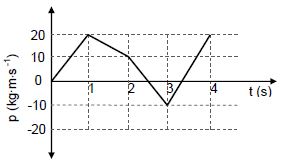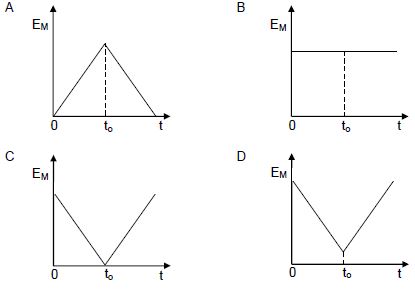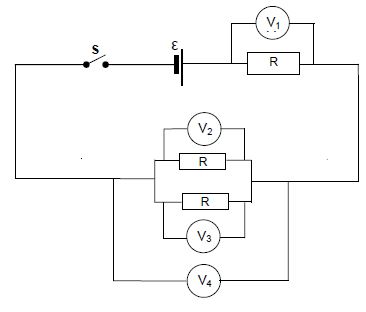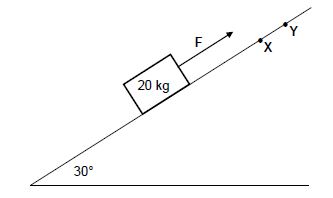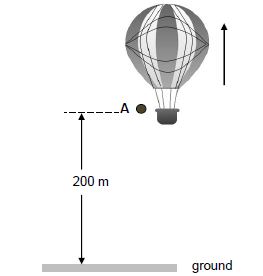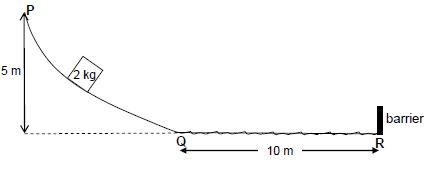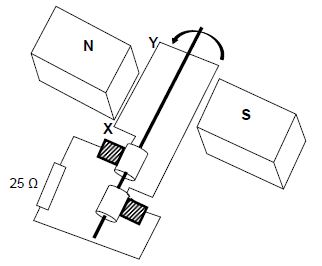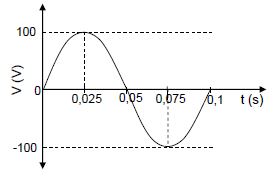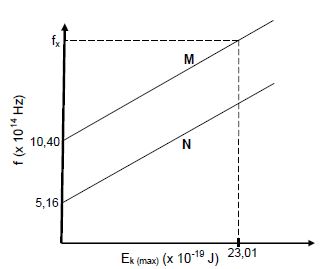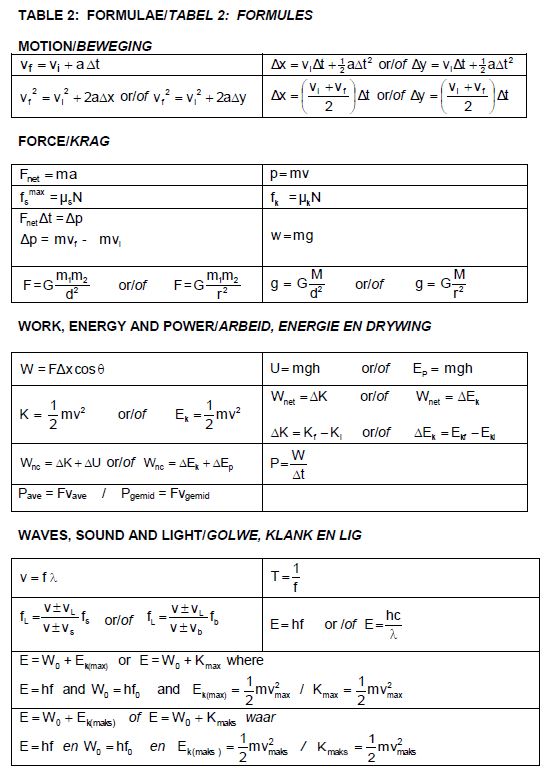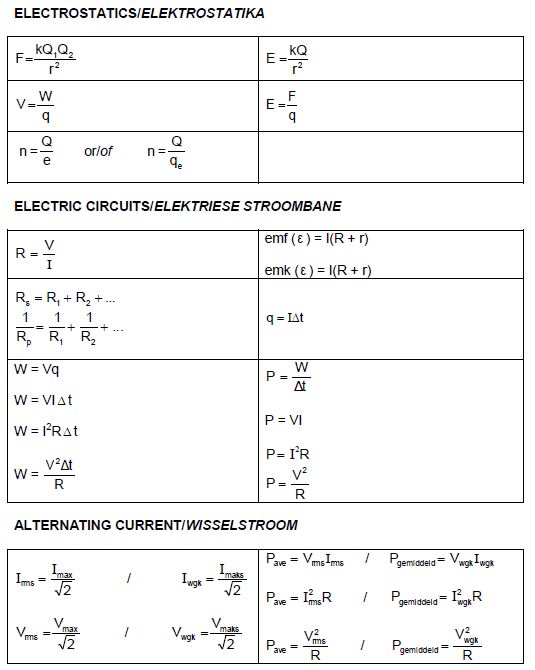PHYSICAL SCIENCES PAPER 1 GRADE 12 QUESTIONS - NSC PAST PAPERS AND MEMOS NOVEMBER 2021
Share via Whatsapp Join our WhatsApp Group Join our Telegram GroupINSTRUCTIONS AND INFORMATION
- Write your examination number and centre number in the appropriate spaces on the ANSWER BOOK.
- This question paper consists of TEN questions. Answer ALL the questions in the ANSWER BOOK.
- Start EACH question on a NEW page in the ANSWER BOOK.
- Number the answers correctly according to the numbering system used in this question paper.
- Leave ONE line between two subquestions, e.g. between QUESTION 2.1 and QUESTION 2.2.
- You may use a non-programmable calculator.
- You may use appropriate mathematical instruments.
- Show ALL formulae and substitutions in ALL calculations.
- Round off your FINAL numerical answers to a minimum of TWO decimal places.
- Give brief motivations, discussions, etc. where required.
- You are advised to use the attached DATA SHEETS.
- Write neatly and legibly.
QUESTION 1: MULTIPLE-CHOICE QUESTIONS
Various options are provided as possible answers to the following questions. Each question has only ONE correct answer. Choose the answer and write only the letter (A–D) next to the question numbers (1.1 to 1.10) in the ANSWER BOOK, e.g. 1.11 E.
1.1 Consider the statement below.
The perpendicular force exerted by a surface on an object in contact with the surface.
Which ONE of the following forces is defined by the statement above?
- Normal force
- Resultant force
- Frictional force
- Gravitational force (2)
1.2 Two balls of masses m and 2m are dropped simultaneously from the same height above the ground. Ignore air resistance.
When the balls strike the ground, which ONE of the following physical quantities will be the same for both balls?
- Weight
- Velocity
- Momentum
- Kinetic energy (2)
1.3 The graph below shows how the momentum (p) of an object changes with time (t).
During which ONE of the following time intervals, measured in seconds, is the magnitude of the net force acting on the object the greatest?
- 0 to 1
- 1 to 2
- 2 to 3
- 3 to 4(2)
1.4 A ball is dropped from a height above a floor. The ball makes an elastic collision with the floor at time to and bounces vertically upwards.
Ignore air resistance.
Which ONE of the following graphs shows how the total mechanical energy (EM) of the ball changes with time?
1.5 Consider the two spectrum diagrams below.
Diagram 1 represents the spectrum of an element in a laboratory on Earth.
Diagram 2 represents the spectrum of the same element from a distant star as observed from Earth.
Which ONE of the following can be deduced from the spectra above?
- The star is moving towards Earth.
- The star is at rest relative to Earth.
- The star is moving away from Earth.
- Both the star and Earth are moving towards each other. (2)
1.6 The diagram below shows the field lines for the combined electric field due to two small charged spheres P and Q.
Which ONE of the combinations below correctly shows the polarity of spheres P and Q?
| SPHERE P | SPHERE Q | |
| A | Negative | Positive |
| B | Negative | Negative |
| C | Positive | Positive |
| D | Positive | Negative |
1.7 Two identical spheres, P and Q, carry charges of +q and –2q respectively. Sphere P exerts an electrostatic force of magnitude F on sphere Q.
Which ONE of the following represents the magnitude of the electrostatic force exerted on sphere P by sphere Q?
- 1/2F
- F
- 2F
- 4F
(2)
1.8 In the circuit diagram shown below all the resistors are IDENTICAL. Ignore the internal resistance of the cell.
Which voltmeter will have the HIGHEST reading when switch S is closed?
- V1
- V2
- V3
- V4
(2)
1.9 In which ONE of the following electrical machines is electrical energy converted to mechanical energy?
- AC generator
- DC generator
- AC dynamo
- DC motor
(2)
1.10 Which ONE of the following combinations correctly links an emission spectrum and an absorption spectrum to the energy transitions of an electron in an atom?
| EMISSION SPECTRUM | ABSORPTION SPECTRUM | |
| A | From low to high energy levels | From high to low energy levels |
| B | From low to high energy levels | From low to high energy levels |
| C | From high to low energy levels | From high to low energy levels |
| D | From high to low energy levels | From low to high energy levels |
(2)
[20]
QUESTION 2 (Start on a new page.)
A 20 kg block is placed on a rough surface inclined at 30° to the horizontal. A constant force F, acting parallel to the surface, is applied on the block so that the block moves up the incline at a CONSTANT VELOCITY of 2 ms-1. Refer to the diagram below.
A constant kinetic frictional force of 18 N acts on the block.
2.1 State Newton's First Law in words. (2)
2.2 Draw a labelled free-body diagram for the block. (4)
2.3 Calculate the magnitude of force F. (4)
Force F is removed when the block reaches point X on the surface. The block continues to move up the surface and comes to rest momentarily at point Y.
Assume that the kinetic frictional force acting on the block remains at 18 N as it moves from point X to point Y.
2.4 Write down the net force acting on the block as it moves from X to Y. (2)
2.5 Calculate the distance between points X and Y. (4)
[16]
QUESTION 3 (Start on a new page.)
A hot-air balloon is moving upwards at a CONSTANT UNKNOWN speed.
3.1 Is the hot air balloon in free fall? Choose from YES or NO.
Give a reason for the answer. (2)
When the balloon is 200 m above the ground, a small stone A is dropped from the balloon. See the diagram above. Another small stone B is dropped 5 s later from the balloon while the balloon is still moving upwards at constant velocity.
Stone A strikes the ground at a speed of 62,68 m∙s-1.
Ignore air resistance.
3.2 Calculate the:
3.2.1 Speed of the hot air balloon (3)
3.2.2 Time it takes stone A to strike the ground (3)
3.2.3 Distance between the hot-air balloon and stone B at the instant when stone A strikes the ground (6)
3.3 On the same set of axes, draw position-time graphs for both the hot-air balloon and stone A from the moment the stone is dropped until it strikes the ground.
Use the ground as zero reference.
Label your graphs BALLOON and A. (4)
[18]
QUESTION 4 (Start on a new page.)
A ball X, of mass 10 kg, is moving eastwards with a velocity of 2 m∙s-1. It collides ELASTICALLY with another ball, Y, of mass 2 kg which was moving with an unknown velocity vY (Diagram A). Immediately after the collision, ball X comes to rest and ball Y moves eastwards with a kinetic energy of 36 J (Diagram B).
Ignore friction.
4.1 Explain the meaning of the term elastic collision. (2)
4.2 Calculate velocity vY. (5)
The balls were in contact with each other for 0,1 s during the collision.
4.3 Calculate the magnitude of the force that ball X exerted on ball Y during the collision. (3)
[10]
QUESTION 5 (Start on a new page.)
A 2 kg box is released from rest at point P, 5 m above the ground. It slides down a smooth frictionless curved track PQ. See the diagram below.
5.1 State the principle of conservation of mechanical energy in words. (2)
5.2 Use the PRINCIPLE OF CONSERVATION OF MECHANICAL ENERGY to calculate the speed of the box when it reaches point Q. (3)
The box passes point Q and moves 10 m on a rough horizontal surface before striking a barrier at point R at a speed of 4 ms-1.
5.3 Use ENERGY PRINCIPLES to calculate the magnitude of the average frictional force acting on the box as it moves from Q to R. (4)
The barrier exerts an impulse of 14 Ns to the LEFT on the box when the box strikes the barrier.
5.4 Calculate the change in kinetic energy of the box after striking the barrier. (5)
[14]
QUESTION 6 (Start on a new page.)
The siren of a stationary ambulance emits sound waves at a constant frequency of 680 Hz. A man is standing with a detector that records the wavelength of the sound emitted by the siren, as shown in the diagram below.
The speed of sound in air is 340 m∙s-1.
6.1 Calculate the wavelength of the detected sound. (3)
The ambulance now moves at a constant speed along the road TOWARDS the man. The detector now records the wavelength of the sound, which differs from the previous reading by 0,05 m.
6.2 State the Doppler effect. (2)
6.3 How would EACH of the following have changed when the ambulance approached the detector compared to when the ambulance was stationary?
Choose from INCREASED, DECREASED or NO CHANGE.
6.3.1 Distance between the wave fronts (1)
6.3.2 Frequency of the detected waves (1)
6.4 Calculate the speed of the ambulance. (5)
[12]
QUESTION 7 (Start on a new page.)
7.1 A small neutral sphere acquires a charge of -1,95 x 10-6 C.
7.1.1 Were electrons ADDED TO or REMOVED FROM the sphere? (1)
7.1.2 Calculate the number of electrons which were added or removed. (3)
7.1.3 Define the term electric field at a point. (2)
7.1.4 Calculate the magnitude of the electric field at a point 0,5 m from the centre of the charged sphere. (3)
7.2 Two point charges, q1 and q2, are fixed 0,02 m apart. The magnitude of charges q1 and q2 is the same and q1 is NEGATIVELY charged.
The small charged sphere with the charge of -1,95 x 10-6 C is placed at point P, 0,03 m east of charge q2, as shown in the diagram below. The sphere at point P experiences a net electrostatic force of 1,38 N west.
Calculate the magnitude of the charge on q2. (5)
[14]
QUESTION 8 (Start on a new page.)
The battery in the circuit shown below has an emf of 12 V and an unknown internal resistance r.
The resistance of the connecting wires and the ammeter is negligible.
Switch S is OPEN.
8.1 Write down the reading on:
8.1.1 Voltmeter V1 (1)
8.1.2 Voltmeter V2 (1)
Switch S is now CLOSED.
The reading on the ammeter is 1,2 A and the power dissipated in resistor X is 5,76 W.
8.2 Define the term power. (2)
Calculate the:
8.3 Resistance of resistor X (3)
8.4 Total EXTERNAL resistance of the circuit (3)
8.5 Reading on voltmeter V2 (5)
A length of wire of negligible resistance is used to connect point P to point Q in the circuit.
8.6 How will the reading on voltmeter V1 be affected?
Choose from INCREASES, DECREASES or NO EFFECT.
Explain the answer.
(4)
[19]
QUESTION 9 (Start on a new page.)
A simplified diagram of an AC generator connected to a 25 Ω resistor is shown below. The coil rotates anticlockwise.
9.1 Name the component that distinguishes this generator from a DC generator. (1)
9.2 nIn which direction will the induced current flow in section XY of the coil?
Choose from X to Y OR Y to X. (2)
The graph below shows the output voltage of the generator for one cycle of rotation of the coil.
9.3 Define the term rms potential difference. (2)
9.4 Calculate the rms current in the circuit.(4)
9.5 Calculate the average power dissipated in the 25 Ω resistor. (3)
The speed of rotation of the coil in the generator is now DOUBLED.
9.6 Copy the set of axes below in your ANSWER BOOK and sketch the graph of output voltage versus time for 0,1 s.
(3)
[15]
QUESTION 10 (Start on a new page.)
The relationship between frequency (f) and maximum kinetic energy (Ek(max)) of photoelectrons emitted from two cathodes, M and N, of different photoelectric cells is investigated. The graphs below have been obtained from the results.
10.1 Define the term threshold frequency. (2)
10.2 How does the maximum kinetic energy of photoelectrons emitted from cathode N compare to the maximum kinetic energy of those emitted from cathode M when light of a frequency greater than 10,40 x 1014 Hz is shone on each of the cathodes?
Choose from GREATER THAN, SMALLER THAN or EQUAL TO. (2)
10.4The experiment is now repeated for cathode M using light of frequency fx, but of higher intensity. How will EACH of the following be affected?
Choose from INCREASES, DECREASES or NO EFFECT.
10.4.1 The y-intercept of the graph (1)
10.4.2 The number of photoelectrons emitted per unit time (1)
10.4.3 The maximum kinetic energy of the emitted photoelectrons (1)
[12]
TOTAL: 150
DATA FOR PHYSICAL SCIENCES GRADE 12
PAPER 1 (PHYSICS)
TABLE 1: PHYSICAL CONSTANTS
| NAME | SYMBOL | VALUE |
| Acceleration due to gravity | g | 9,8 m·s-2 |
| Universal gravitational constant | G | 6,67 x 10-11 N·m2·kg-2 |
| Radius of the Earth | RE | 6,38 x 106 m |
| Mass of the Earth | ME | 5,98 x 1024 kg |
| Speed of light in a vacuum | c | 3,0 x 108 m·s-1 |
| Planck's constant | h | 6,63 x 10-34 J·s |
| Coulomb's constant | k | 9,0 x 109 N·m2·C-2 |
| Charge on electron | e | -1,6 x 10-19 C |
| Electron mass | me | 9,11 x 10-31 kg |
